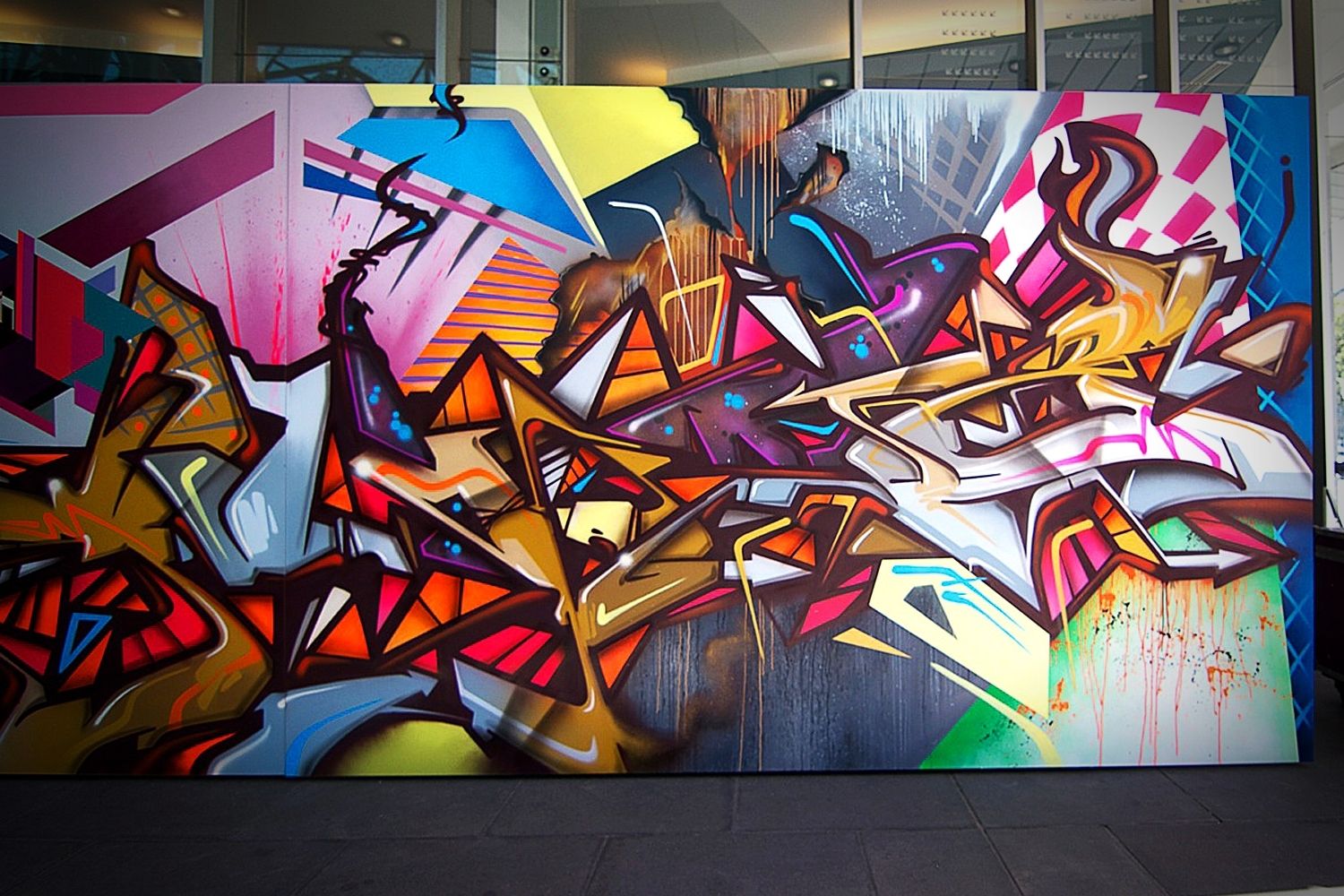
What are the key differences between street art and graffiti? Today, these murals and other forms of sanctioned street art are still largely perceived as more socially acceptable and legitimate than graffiti, but their presence in cities around the world remains complicated. In fact, many of the earliest street artists and muralists either drew inspiration from or started out as graffiti artists themselves before making the switch. The exact origin of the term street art remains ambiguous, but the distinction between graffiti and street art became clearer within the mainstream art world during the 1970s and ’80s, possibly due to the fact emerging street artists who wanted a way to differentiate their work. But technically, graffiti and street art are both subversive art movements on their own, and graffiti actually predates the modernized murals we generally see in cities today. So, if a public mural is considered street art, does that mean graffiti is also a form of street art? The answer is: sort of.īecause they are so similar, graffiti and street art are often conflated and used interchangeably-even in some artistic circles. These expansive, often larger-scale works of art typically painted on open walls or sides of buildings are most frequently created in partnership with companies, brands, or local organizations, but have also at times been commissioned by city officials to discourage and prevent illegal graffiti. This intentionally broad definition is key to understanding the scope of what street art covers, but public murals are by far the most common form of street art. Defined as “public-space artwork that’s created for consumption outside of the typical art gallery setting,” street art is essentially synonymous with “public art” as it encompasses a variety of mediums like painting, sculpture, or stained glass. In contrast, street art is, quite literally, art that can be found on the street. While technically, such graffiti is a form of illegal vandalism, it arguably serves as a necessary disruption to daily life, forcing people to pay more attention to specific issues.

In the 1980s Keith Haring used graffiti to comment on the drug epidemic and AIDS crisis, and more recently, Tatyana Fazlalizadeh has created messages addressing gender inequality. Throughout history, graffiti has been continually used as a vessel for political and social activism, especially among those who have long been silenced or purposefully omitted from larger societal conversations. Graffiti’s presence isn’t always negative, though. Graffiti is most commonly created illegally, which contributes to the art form’s negative reputation rooted in crime, delinquency, and rebellion against authority. The graffiti we’re familiar with today, such as tagging of names, first began appearing overnight on underground subway cars in major cities like New York and Philadelphia as early as the 1920s. ĭerived from the Italian word with the same spelling, graffito translates to “ incised inscription or design,” and is a derivative of graffiare, which means “to scratch.” Though contemporary graffiti is most commonly created through spray-painting methods, historic works of graffiti-many of which can be traced as far back as the beginnings of human civilization- were scratched into cave walls and monuments with sharp objects like stones. So if there’s just one, it’s technically considered to be a single graffito. It’s pretty common to hear someone refer to any and all of these instances as “graffiti,” but as it turns out, the word graffiti is actually a plural noun. By definition, graffiti refers to markings, photos, words, initials, or drawings that have been spray-painted, sketched, or even scratched onto walls, sidewalks, or any other publicly accessible areas. What is graffiti?ĭepending on who you ask, graffiti is either a form of vandalism, or a form of art-or both, simultaneously. Let’s explore the origins of graffiti and street art, the similarities the two share, and the key differences that set them apart. If you’ve ever found yourself wondering if the way you refer to your favorite public art is accurate, you’re certainly not alone. The terms graffiti and street art have long been used interchangeably to describe these public art installations-but what should we really call them? Is there a difference? New murals crop up in cities, large and small, on what feels like an everyday basis, each one breathing new, vibrant life into the streets that were once blank canvases for creativity. Now more than ever before, public art is on the rise.


 0 kommentar(er)
0 kommentar(er)
